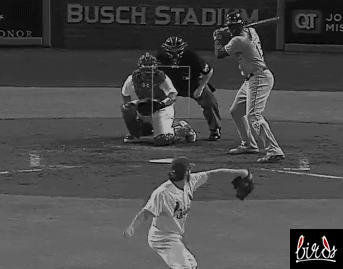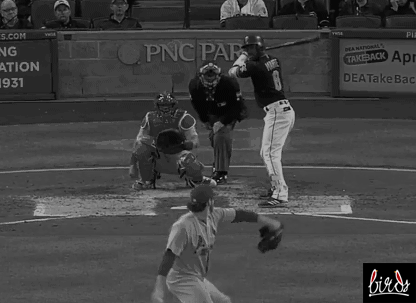
Since sweeping the rival Cubs on May 6th, the St. Louis Cardinals have dropped ten of their last sixteen. They haven’t won a single series and their two most successful ones were four-game splits with the Padres and the Phillies.
The offense, as a whole, has sputtered and the bullpen is one of the worst in the majors. The starting pitching has been the only consistent strength of this team, but their mistakes are magnified when the offense can’t score or the bullpen is waiting to give up a lead anyways. Through May 6th, the Cardinals were 20-12 and sat atop the NL Central. Less than three weeks later, they’re sitting in fourth.
That’s not to say there aren’t bright spots, but that light harder to see through a losing fog. One of the team’s brightest spots, Jack Flaherty, takes the mound this afternoon. Another, Miles Mikolas, is scheduled for tomorrow, where he will either attempt to pitch the Cardinals to their first series win since that Cubs sweep or to avoid the Cardinals being again themselves.
I, personally, was critical of the Miles Mikolas signing. And while many were, there were a few led by @Moz_Algorithm who believed in him from the start. So far, Moz Algo has been spot on. Mikolas looks like the real deal.
The Lizard King is getting it done stateside with a deep, balanced repertoire. According to Pitch Info data hosted on Fangraphs, Mikolas is one of only two starting pitchers (min. 20IP) who throws four different pitches at least 18% of the time. You can see that balance in his pitch frequencies, in order by usage, relative to the rest of the MLB starters.

Mikolas uses his primary offering, a fourseam fastball, about 30% of the time. That’s about one-third less frequently than the MLB average for primary pitches. His secondary pitch, the slider, is basically in line with the sample average. Where he stands out again, is his third and fourth offerings (sinker and curve), which he uses much more frequently than his peers use their own third and fourth offerings. His least frequent pitch, a changeup, is still used more than other starters’.
Mikolas stands out even further with his usage of the slider and curveball, collectively referred to as breaking balls. According to Baseball Savant, Mikolas turns to his breaking pitches 45.5% of the time, which is the fourth highest rate among starters (min. 200 total pitches).
Mikolas isn’t afraid to use his breaking balls exclusively in entire at-bats either, as in this sequence against Jorge Soler. On the first pitch, Mikolas leaves a slider over the heart of the plate. Normally, this would end poorly for a pitcher, but since Mikolas already had Soler guessing from the start of the at-bat, he got away with a harmless foul ball.

Mikolas followed that up with a well located slider off the edge, and then put the hitter away with a filthy curveball. While the Royals offense might look helpless at times, Jorge Soler hasn’t – his 134 wRC+ is 34% above average. Mikolas rare ability to throw two distinct breaking balls made retiring Soler look easy.
Oftentimes when pitchers throw two similar pitches, like a curve and slider or slider and cutter, they tend to merge into one less effective offering. Mikolas, however, maintains nearly a 10 mph velocity gap between his slider and curveball. The curve prioritizes vertical movement, getting an additional two feet of drop (gravity inclusive) compared to the slider, while the slider focuses on horizontal movement that’s accentuated by a release point that’s a little lower and a little more towards third base.
While Mikolas best strength might be those breaking balls, his fourseamer is an above average pitch as well. At 94.4 mph, his average fourseamer velocity rates in the top 20% among MLB starters and his spin rate of 2320 RPM is just outside the top 25%, according to Baseball Savant. When Mikolas uses the depth of his repertoire to force hitters into a guessing game, his fastball plays up even more – like in the sequence to Starling Marte.

These pitches aren’t tunneled well at all, but Marte was guessing and guessed wrong. Just look at that swing and follow-through. The full at-bat sequence went curveball-changeup-slider-fourseamer. Marte couldn’t have know what was coming, which allowed Mikolas to sneak a high fastball over his bat for the swinging strikeout.
We can see from the sequences to Soler and Marte that Miles Mikolas trusts his breaking pitches in any count. That trust was even more evident in the sequence below to Jose Pirela of the San Diego Padres.
According to Baseball Savant, when pitchers have been down two-balls and no-strikes in 2018, they’ve gone to a fastball 72.5% of the time. Mikolas, though, kept Pirela off balance by turning to a drop-down curveball in one of his favorite locations for the pitch. He followed it up with another curveball in his other favorite location for strike two.

With the count back even and Pirela thinking offspeed, Mikolas geared up for a 95.9 mph fourseamer that painted the outside corner. It was the fastest pitch of the at-bat and the fastest pitch of the sixth inning. Pirela never got the bat off his shoulder, and Mikolas got back in the dugout untouched.
While starting pitching hasn’t been a problem for the St. Louis Cardinals, they’re going to need the rotation to remain consistent if they’re going to keep up in the NL Central race. Miles Mikolas, originally thought to be a fourth or fifth starter, has emerged as a top-of-the-rotation caliber weapon thus far. While even bad pitchers can have phenom-like stretches, the depth and quality of Mikolas repertoire suggests he might have more staying power.

